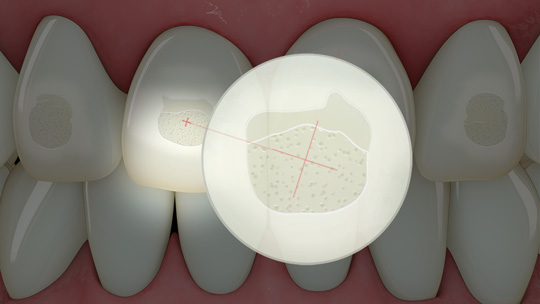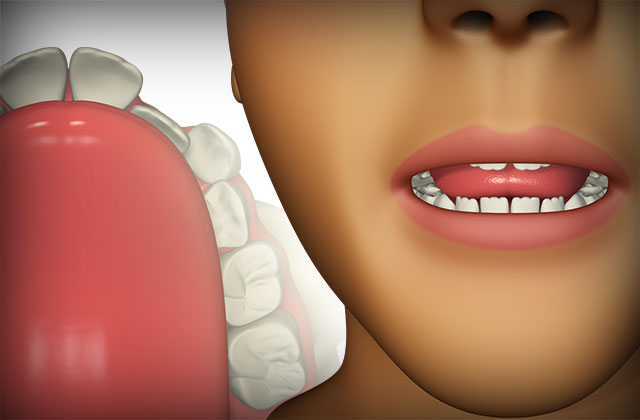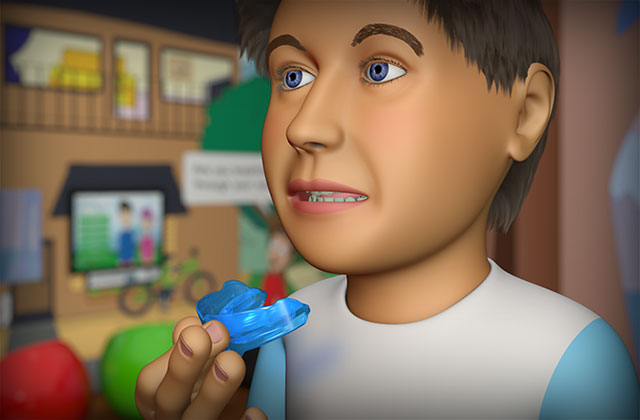
Treatment with Braces
What are the potential risks?
Introduction
Braces and extracting teeth in teenage years does not solve the underlying causes of crooked teeth and incorrect facial development.
Orthodontics with braces has been used for decades to straighten teeth in early teens when all the permanent teeth have appeared, and although effective in forcing the teeth into straighter alignment, it's important to recognise that there are well-documented disadvantages. Along with leaving the underlying causes of crooked teeth untreated, traditional orthodontic techniques have several other risks or limitations including surgery, enamel and root damage, as well as the high likelihood of relapse unless a permanent commitment is made to wearing a fixed or removable retainer.
The main risks and limitations of treatment with braces are:
- RELAPSE - up to 90%
- ENAMEL DAMAGE
- ROOT DAMAGE - 100%
- RETENTION - for life
Removable appliances like the Myobrace® have been shown to not cause root resorption because of intermittent use. Although The Myobrace®System can still be combined with braces, they are required in much fewer cases and are fitted for a much shorter time with lighter forces.
Relapse
Long-term stability is a common problem with traditional orthodontic methods and treatment will most often result in relapse unless the teeth are permanently retained. Research shows that when braces are used with or without extractions, the chances are about 90% that they will return to their original position or become worse than before treatment. The pictured image illustrates teeth relapsing after treatment with braces.
"Relapse occurs in up to 90% of cases when retainers are removed."
Enamel Damage
The surface of a tooth is made up of tooth enamel - a hard, mineral coating that protects the tooth against decay. When braces are fitted, they are bonded to the teeth through a chemical process. The enamel surface of the tooth is etched to allow for better bonding strength. Because they are bonded to the teeth it is more difficult to clean, which means the enamel can decay around the braces, causing white spots or stains. When the braces are removed, the enamel on the surface of the teeth can be permanently damaged in the process. If the teeth are not cleaned properly, problems such as gum disease, tooth decay, and decalcification (white or colored marks on the teeth) can result.

Root Damage
Research has now proven that orthodontic movement of teeth through the constant force of braces will cause root damage in nearly 100% of patients. This means part of the roots are dissolved away by the orthodontic treatment and some teeth can be lost over time as a result. The use of intermittent forces and removable appliances has been proven to cause little or no root damage. The pictured animation represents damage to the root tooth caused by braces.
"100% of cases can expect root resorption of up to 4mm."
Permanent Retention
A retainer is an appliance that is used to stop the teeth from moving once the braces are removed. Due to the fact that conventional treatment with braces does not address the causes of crooked teeth, the only way to ensure the teeth stay straight is by fitting a permanent retainer. Newer treatments with clear aligners have the same problem of relapse and also require lifetime maintenance with retainers.
"The only way to ensure continued satisfactory alignment after treatment is by the use of fixed or removable retention for life."
View Next:
 The most up-to-date evidence reveals hereditary factors or big teeth in small jaws are not responsible for crowded teeth or incorrect jaw development.
The most up-to-date evidence reveals hereditary factors or big teeth in small jaws are not responsible for crowded teeth or incorrect jaw development. Myobrace® treatment focuses on addressing the underlying causes of crooked teeth and correcting the poor oral habits causing orthodontic problems.
Myobrace® treatment focuses on addressing the underlying causes of crooked teeth and correcting the poor oral habits causing orthodontic problems. With good compliance, Myobrace® treatment can offer more than just straighter teeth, allowing children to reach their full genetic potential.
With good compliance, Myobrace® treatment can offer more than just straighter teeth, allowing children to reach their full genetic potential.
Want more information about Myobrace® treatment?
Click below to ask a question about Myobrace® treatment.

